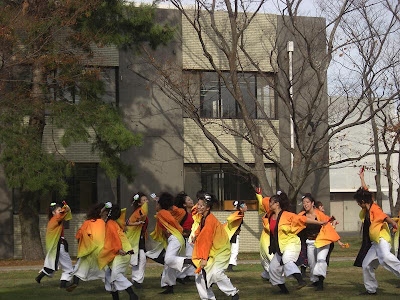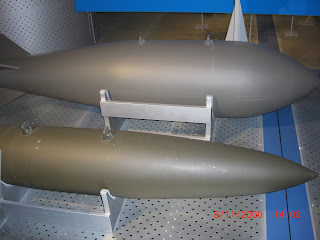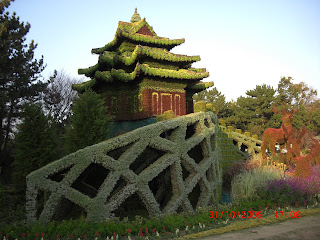Sunday, March 27, 2011
Scrisoare din Japonia!
Sambata, 19 Martie 2011 Buna iubita mea familie si dragi prieteni, In primul rand vreau sa va multumesc foarte mult pentru ingrijorarea voastra pentru mine. Sunt foarte emotionata. De asemenea doresc sa-mi cer scuze ca va trimit un mesaj general adresat tuturor, dar pentru moment, pare sa fie cea mai buna cale pentru ca mesajul meu sa ajunga la voi. Aici in Sendai lucrurile par sa fi fost ireale. Dar sunt foarte binecuvantata sa am prieteni minunati care ma ajuta foarte mult. Fiindca baraca mea a devenit inca si mai vrednica de numele ei, m-am mutat acum in casa unui prieten. Impartim resursele precum apa, hrana si un incalzitor cu kerosen. Dormim aliniati intr-o camera, mancam la lumina lumanarii, impartasim povesti. Este o atmosfera calda, prietenoasa si frumoasa. In timpul zilei, ne ajutam unul pe altul sa curatam mizeria din casele noastre. Oamenii stau in masini, uitandu-se la stiri de pe panourile de navigatie, sau se aliniaza la coada pentru a primi apa de baut atunci cand se deschide o sursa. Daca cineva are in casa apa care curge la robinet, pune semne afara, pentru ca oamenii sa vina sa-si umple canile si galetile. De-a dreptul uimitor, unde stau eu nu au fost jafuri, nu au fost imbranceli la cozi. Oamenii isi lasa usa casei deschisa, pentru ca asa e mai sigur, in caz ca loveste un nou cutremur. Oamenii tot spun: Asa era pe vremuri cand toti se ajutau unii pe altii. Cutremurele continua sa vina. Noaptea trecuta au lovit aproximativ la fiecare 15 minute. Sirenele se aud non stop si elicopterele ne trec pe deasupra capului foarte des. Ne-a intrat apa in case timp de cateva ore asta noapte, iar acum pentru jumatate de zi. ... A venit electricitatea in dupa-amiaza asta. Gazul inca n-a venit. Dar toate lucrurile astea depind de fiecare zona. Unii au, altii n-au gaz, apa si electricitate. Nimeni nu s-a spalat de cateva zile. Ne simtim murdari, dar acum avem griji mult mai importante decat asta. Iubesc aceasta stare de a lasa la o parte a aspectelor neesentiale. Traind in intregime la nivel de instinct, de intuitie, de grija, a ceea ce este necesar pentru supravietuire, nu doar pentru mine, ci pentru intregul grup. Se desfasoara ciudate universuri paralele. Unele case sunt intre-o ruina completa, altele au rufe la uscat la soare! Oamenii se aliniaza la cozi pentru mancare sau apa, iar cativa isi plimba cainele! Toate se intampla in acelasi timp. O alta amprenta a frumusetii este in primul rand linistea din timpul noptii. Nu se aud masini. Nimeni nu este pe strazi. Iar cerurile in timpul noptii sunt impanzite de stele. De obicei vedeam doar vreo doua, dar acum tot cerul e plin. Muntii din Sendai sunt puternici si datorita aerului proaspat le putem vedea siluetele profilate pe cer intr-un mod magnific. Si japonezii insisi sunt atat de minunati. Revin la baraca mea pentru a o verifica in fiecare zi, acum pentru a trimite acest e-mail din moment ce a venit electricitatea, si gasesc mancare si apa lasate la usa de la intrare. Nu am idee de la cine, dar este acolo. Batrani cu palarii verzi merg din usa in usa intreband daca toata lumea este OK. Oamenii vorbesc cu persoane complet straine intrebandu-le daca au nevoie de ajutor. Nu vad semne de teama. Resemnare, da, dar frica sau panica, nu. Ne spun ca ne putem astepta la replici, si chiar la alte cutremure majore, timp de inca o luna sau mai mult. Si ne confruntam mereu cu zguduieli, huruituri, vibratii, zdruncinaturi. Sunt binecuvantata pentru ca traiesc intr-o parte a Sendai-ului mai ridicata, mai solida decat alte zone. Deci, deocamdata zona asta este mai bine situata decat altele. Asta noapte, sotul prietenei mele a venit de la tara, aducand apa si mancare. Binecuvantata din nou. Cumva in acest moment realizez din experienta directa ca este vorba intr-adevar de un pas evolutionar Cosmic enorm care se produce acum peste tot in lume chiar in acest moment. Si cumva, pe masura ce traiesc experienta acestor evenimente ce se desfasoara in Japonia, imi simt inima deschizandu-se foarte larg. Fratele meu m-a intrebat daca nu ma simt ingrozitor de mica, din cauza tuturor celor intamplate. Nu, nu ma simt mica. Ci mai degraba, ma simt ca o parte din ceva mult mai mare decat mine. Acest val al nasterii (peste tot in lume) este dificil, si totusi magnific. Va multumesc din nou pentru grija si iubirea voastra pentru mine. Va trimit inapoi multa iubire, Cu drag, Aiko
Saturday, May 1, 2010
Sunday, January 31, 2010
Lidia Simon - locul 4 la maratonul de la Osaka!

Duminica 31 Ianuarie 2010, Lidia Simon s-a clasat pe locul patru la maratonul de la Osaka cu timpul de 2min 27 sec 11 sutimi. La cursa care se desfasoara in fiecare an pe distanta de 42 km si 195 m au participat 17 atlete. Pe primul loc s-a clasat Amane Gobena din Etiopia- 2:25:14, urmata de Marisa Barros din Portugalia - 2:25:44 si japoneza Mari Ozaki - 2:26:27
Saturday, January 30, 2010
Thursday, December 10, 2009
Monday, October 26, 2009
Hamamatsu
City Logo

Using the words "water" and "verdure" as inspiration, two things from which all life springs, a logo was designed with a motif that incorporates the treasured environs of the new Hamamatsu City: from the lush forests of the north, to Lake Hamana in the west, to the beautiful Enshu Sea in the south. The symmetrical pattern of green and blue represents the cycles of nature, as well as our new city's theme of becoming "a cluster city in tune with nature." The "white wave" stands for the waves of the Enshu Sea. At the same time, they are also the "waves" Hamamatsu is creating throughout the world with its vision of "a city whose citizens' lively economic, cultural, and social activities coexist with the local preservation of the environment". Furthermore, they reflect the energy and growth of Hamamatsu itself.

Using the words "water" and "verdure" as inspiration, two things from which all life springs, a logo was designed with a motif that incorporates the treasured environs of the new Hamamatsu City: from the lush forests of the north, to Lake Hamana in the west, to the beautiful Enshu Sea in the south. The symmetrical pattern of green and blue represents the cycles of nature, as well as our new city's theme of becoming "a cluster city in tune with nature." The "white wave" stands for the waves of the Enshu Sea. At the same time, they are also the "waves" Hamamatsu is creating throughout the world with its vision of "a city whose citizens' lively economic, cultural, and social activities coexist with the local preservation of the environment". Furthermore, they reflect the energy and growth of Hamamatsu itself.
Thursday, October 22, 2009
Hamamatsu
Population
When Hamamatsu became a municipality in 1911 it had only 36,782 people. It continued to grow as it merged with surrounding villages and towns and as more people continued to move into and were born into the city. The population exceeded 100,000 in 1928, just 17 years after municipalization.
Although the population dropped to 81,437 in 1945 due to World War II, it quickly regained its momentum, reaching 200,000 in 1954 and 300,000 in 1957.
In 1982 Hamamatsu became a city with half a million people. It is rare for a city that is neither a prefectural capital nor a satellite city near a metropolitan area to have such a large population.
On July 1st 2005 Hamamatsu's population reached over 800,000 when it amalgamated with 11 surrounding cities, towns and villages in the Tenryu River and Lake Hamana regions, becoming the largest city in Shizuoka Prefecture. The number of residents holding Alien Registration cards has also been increasing year by year; currently there are approximately 29,000 foreign residents in Hamamatsu, accounting for 3.5% of the population. Hamamatsu may also boast that it has the largest number of Brazilian residents in the country; they make up about 60% (16,000) of the city's foreign population.
When Hamamatsu became a municipality in 1911 it had only 36,782 people. It continued to grow as it merged with surrounding villages and towns and as more people continued to move into and were born into the city. The population exceeded 100,000 in 1928, just 17 years after municipalization.
Although the population dropped to 81,437 in 1945 due to World War II, it quickly regained its momentum, reaching 200,000 in 1954 and 300,000 in 1957.
In 1982 Hamamatsu became a city with half a million people. It is rare for a city that is neither a prefectural capital nor a satellite city near a metropolitan area to have such a large population.
On July 1st 2005 Hamamatsu's population reached over 800,000 when it amalgamated with 11 surrounding cities, towns and villages in the Tenryu River and Lake Hamana regions, becoming the largest city in Shizuoka Prefecture. The number of residents holding Alien Registration cards has also been increasing year by year; currently there are approximately 29,000 foreign residents in Hamamatsu, accounting for 3.5% of the population. Hamamatsu may also boast that it has the largest number of Brazilian residents in the country; they make up about 60% (16,000) of the city's foreign population.
Wednesday, October 7, 2009
Typhoon Melor!
It has been forecasted that a powerful and fierce cyclone will landfall near Tokyo on Thursday, October 8. Typhoon Melor is forecasted to strike the city on Thursday and weather forecasters have made warnings about strong winds and high waves in the sea. Typhoon Melor was swirling with speed of 252 kilometers per hour (156 miles/hr) and bore down in the island of Minami Daito. Typhoon Melor has now slowed down from a Super Typhoon. Typhoon Melor, which centered at 512 km from southeast of Naha in Okinawa today at 12 p.m. Japan time, is now heading towards Tokyo. The weather agency of Japan has forecasted that the typhoon will have a speed of 180 kilometers per hour near its center. An official at the weather agency has warned the residents that the typhoon will bring furious winds and the sea waves can rise up to 80 meters. Though Japan’s buildings are now stronger than it were in past, weather forecasters have issued warnings to the natives as the violent typhoon may claim deaths. Melor means Jasmine in Malay language. The typhoon Melor will follow the route similar to the deadly typhoon of year 1959; however typhoon Melor is not expected to cause damage on a very big scale. The weather agency has raised a warning of scale 3 which means the cyclone may wreck landslides and flash floods.
Just few days ago, a similar strong storm has caused wreckage in other areas of Southeast Asia. The storm, known as Parma, has claimed 16 lives while two persons are still missing.
Tuesday, October 6, 2009
Noriko Sakai!
Japanese actress Noriko Sakai was released on bail Thursday, 41 days after she was taken into custody on drug allegations that triggered a media frenzy and concerns about growing drug use in Japan's entertainment business. Police arrested Sakai, 38, in early August after she turned herself following a weeklong disappearance. She was later formally charged with violating an anti-stimulant law and is to go on trial beginning Oct. 26. The Tokyo District Court approved her release this week on 5 million yen ($55,000) bail, Tokyo police said. Escorted by police, Sakai walked out of the police station as hundreds of tabloid photographers, reporters and fans waited. "I'm truly sorry," she said, bowing deeply. Sakai was initially seen as a distraught wife who went missing after her husband's arrest on drug charges, but later became a suspect herself. Her husband faces similar charges and will be tried separately. "Because of my weakness, I failed to resist the temptation to use drugs that I should never have touched as a citizen, and ended up causing trouble and disappointment to many of you who have long supported me," Sakai said later at a news conference at a Tokyo hotel. "I regret what I did, and I will never make the same mistake again. I promise." The scandal has dominated headlines for weeks in Japan, and authorities have said they will crack down on drug use in the entertainment industry. "Actions by celebrities could make a big social impact, especially on young people," National Police Agency chief Masaharu Ando said last month. He urged the entertainment industry "to eradicate drug problems." Sakai debuted in 1986 at age 15, but rose to fame through acting in TV dramas and singing in the 1990s. She was among the first Japanese actresses to perform and gain popularity in Asia, including China, Hong Kong and Taiwan. Her promotional deals, including one with carmaker Toyota, were canceled after the scandal emerged. Her record label, Victor Entertainment, also canceled its contract with Sakai and pulled all her CDs and other products from stores nationwide. If convicted, she could face up to 10 years in prison. But most first violations bring suspended sentences.
Friday, January 23, 2009
Taro Aso - prime minister of Japan!
Taro Aso (麻生太郎, Asō Tarō?, born September 20, 1940) is the current Prime Minister of Japan, having taken office on September 24, 2008. He is also President[2] of the Liberal Democratic Party (LDP), and has served in the House of Representatives since 1979. He was Minister for Foreign Affairs from 2005 to 2007, and was Secretary-General[2] of the LDP briefly in 2007 and in 2008.
On September 22, 2008, Aso was elected to succeed Yasuo Fukuda as President of the LDP. On September 24, the Diet elected Aso as Prime Minister.[3][4]
On September 22, 2008, Aso was elected to succeed Yasuo Fukuda as President of the LDP. On September 24, the Diet elected Aso as Prime Minister.[3][4]
Saturday, November 29, 2008
Monday, September 15, 2008
Subscribe to:
Comments (Atom)

Custom Search






















































